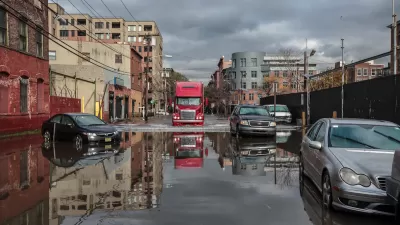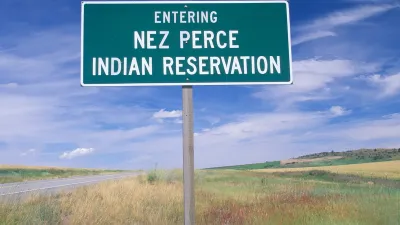Using a set of mid-February photographs from Iceland, Chuck Wolfe describes scaled expressions of urban settlement and transport in Iceland and derives principles for building better places.
In his latest visually-focused Atlantic Cities piece, Wolfe describes urban and rural Iceland from the perspectives of visual inspiration, and as fodder for professional practice regarding settlements and cities. He explains how, "[i]n Icelandic landscapes, in small towns, and in the resurgent capital city of Reykjavik, are scenes and stories that transcend nature, culture and the built environment."
Wolfe provides a nine-point, image-oriented summary of lessons learned from Iceland’s interplay of the natural and built environments, "including human capacity to adapt to the opportunities and constraints of place". Examples include clarity of the night sky, building minimalism that blends with surrounding nature, climate-sensitive use of building color and materials, as well as sensitive interaction of the built environment with water bodies, landscape and sky.
He concludes:
To fully understand cites, I believe we should return to places where human settlement still stands in awe of larger forces, and to view the nascent built environment with discernment and care... [l]ast week’s journey to Iceland was a primer on the very underpinnings of human movement, settlement and consequent urbanization.
FULL STORY: 9 Lessons From Iceland for Building Better Places

Study: Maui’s Plan to Convert Vacation Rentals to Long-Term Housing Could Cause Nearly $1 Billion Economic Loss
The plan would reduce visitor accommodation by 25,% resulting in 1,900 jobs lost.

North Texas Transit Leaders Tout Benefits of TOD for Growing Region
At a summit focused on transit-oriented development, policymakers discussed how North Texas’ expanded light rail system can serve as a tool for economic growth.

Why Should We Subsidize Public Transportation?
Many public transit agencies face financial stress due to rising costs, declining fare revenue, and declining subsidies. Transit advocates must provide a strong business case for increasing public transit funding.

How to Make US Trains Faster
Changes to boarding platforms and a switch to electric trains could improve U.S. passenger rail service without the added cost of high-speed rail.

Columbia’s Revitalized ‘Loop’ Is a Hub for Local Entrepreneurs
A focus on small businesses is helping a commercial corridor in Columbia, Missouri thrive.

Invasive Insect Threatens Minnesota’s Ash Forests
The Emerald Ash Borer is a rapidly spreading invasive pest threatening Minnesota’s ash trees, and homeowners are encouraged to plant diverse replacement species, avoid moving ash firewood, and monitor for signs of infestation.
Urban Design for Planners 1: Software Tools
This six-course series explores essential urban design concepts using open source software and equips planners with the tools they need to participate fully in the urban design process.
Planning for Universal Design
Learn the tools for implementing Universal Design in planning regulations.
City of Santa Clarita
Ascent Environmental
Institute for Housing and Urban Development Studies (IHS)
City of Grandview
Harvard GSD Executive Education
Toledo-Lucas County Plan Commissions
Salt Lake City
NYU Wagner Graduate School of Public Service





























